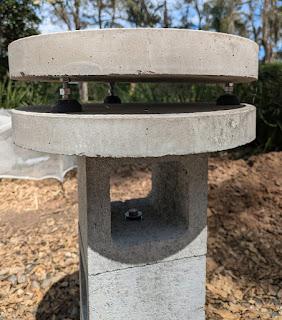As mentioned in a previous post - planning is fairly complex for observing on the home block. That post briefly described an application that was coded called "HawkAstroSkyView" - which mapped azimuth/altitude onto an RA/DEC grid. As explained, this greatly simplified planning - but provided a display dissimilar to the actual view when standing outside. To address this issue another application was coded called "SkyViewAltAz" where the altitude/azimuth sky 'patches' are mapped onto an alt/az 'dome'. The alt/az grid is overlayed with a RA/DEC grid. The alt/az grid 'dome' view more closely matches the view when standing outside - while the RA/DEC indicates the path through the sky view patches. The RA/DEC is marked with dots spaced one hour apart. Note that all sky view patches are coloured green instead of individual colours and all can be viewed at one time (which allows determination whether the desired target object is visible in any sky view) - or individual views can be selected on their own to show detail of that particular sky view.
Buttons are provided to set date and time as for the previous application. This allows building observation plans for particular target objects by identifying the time of year where the object is visible overhead. For example - on this home block January-March is the best time of the year to start observing M42 around 8 pm in the evening. To observe now (end of September) the observation would need to start at around 2 am in the morning.
An enhancement which might be useful is to overlay a 'heatmap' of the degree of field rotation for the alt/az 'dome'. This may help identify pointings where the default exposure time can be increased from the nominal 10 seconds. That function may be added in the future.



